Mars, our nearest neighbor, has long fascinated scientists, dreamers, and space explorers alike. It is the best planet in our solar system, with surface conditions that might one day support human exploration and maybe even colonization. But beyond its intriguing potential for settlement (a theme frequently explored in movies like The Martian, Total Recall, and other science fiction classics), Mars is also researched for its valuable resources.
The Martian surface is rich in minerals, water ice, and regolith materials that could be used to support both robotic and human missions. With advancing technology and the need to support a Mars settlement through in situ resource utilization, mining Martian resources might soon become a reality, opening doors to sustainable missions. Let’s explore which resources are hidden beneath the planet’s red soil.
The Geological History of Mars: A Red Planet Shaped by Fire and Ice
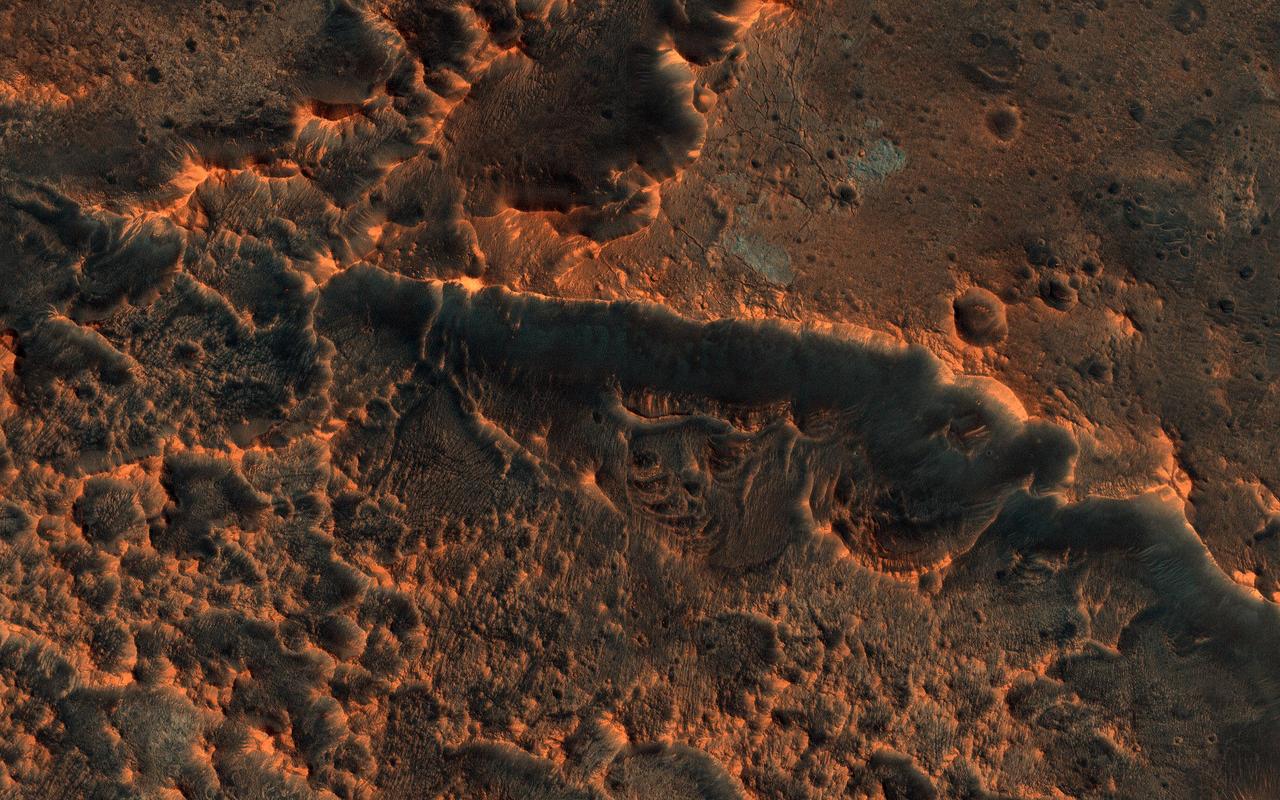
Determining the geological timeline of Mars is far more challenging than on Earth, where rock samples can be easily analyzed in laboratories. Using the available data, scientists have divided Mars’ geological history into three major periods – Noachian, Hesperian, and Amazonian, each named after a specific region of the planet. There is also a hypothesized Pre-Noachian period, though physical evidence for this stage remains elusive.
As far as we can currently tell, the geological history of Mars tells the story of a world shaped by volcanic activity, impact structures, and more. Mars does not have active plate tectonics today, but it once experienced intense geological processes that left behind a diverse landscape of geological features.
- Volcanic Activity: Mars is home to Olympus Mons, the largest volcano in the solar system, standing at 22 kilometers high and 600 kilometers wide as measured by the Mars Orbiter Laser Altimeter (MOLA). Evidence suggests that volcanic activity on early Mars played a crucial role in shaping its surface, especially in the Tharsis region near the western hemisphere equator, which contains a vast plateau of volcanic domes.
- Impact Structures: The surface of Mars is marked by abundant impact craters, a result of its thin atmosphere offering little protection from space debris. These Martian craters, some of which span hundreds of kilometers, provide insight into the planet’s past and the distribution of subsurface materials.
- Water History: While today’s Mars is a dry, frigid desert, there is strong evidence that liquid water once flowed across its surface – that rivers, lakes, and even seas used to cover it billions of years ago. Channels, river deltas, and the presence of sedimentary minerals in places like Meridiani Planum and Gale Crater suggest that Mars had a much wetter past. Canyons, like Valles Marineris, for example, were likely formed at least to some extent due to massive floods.
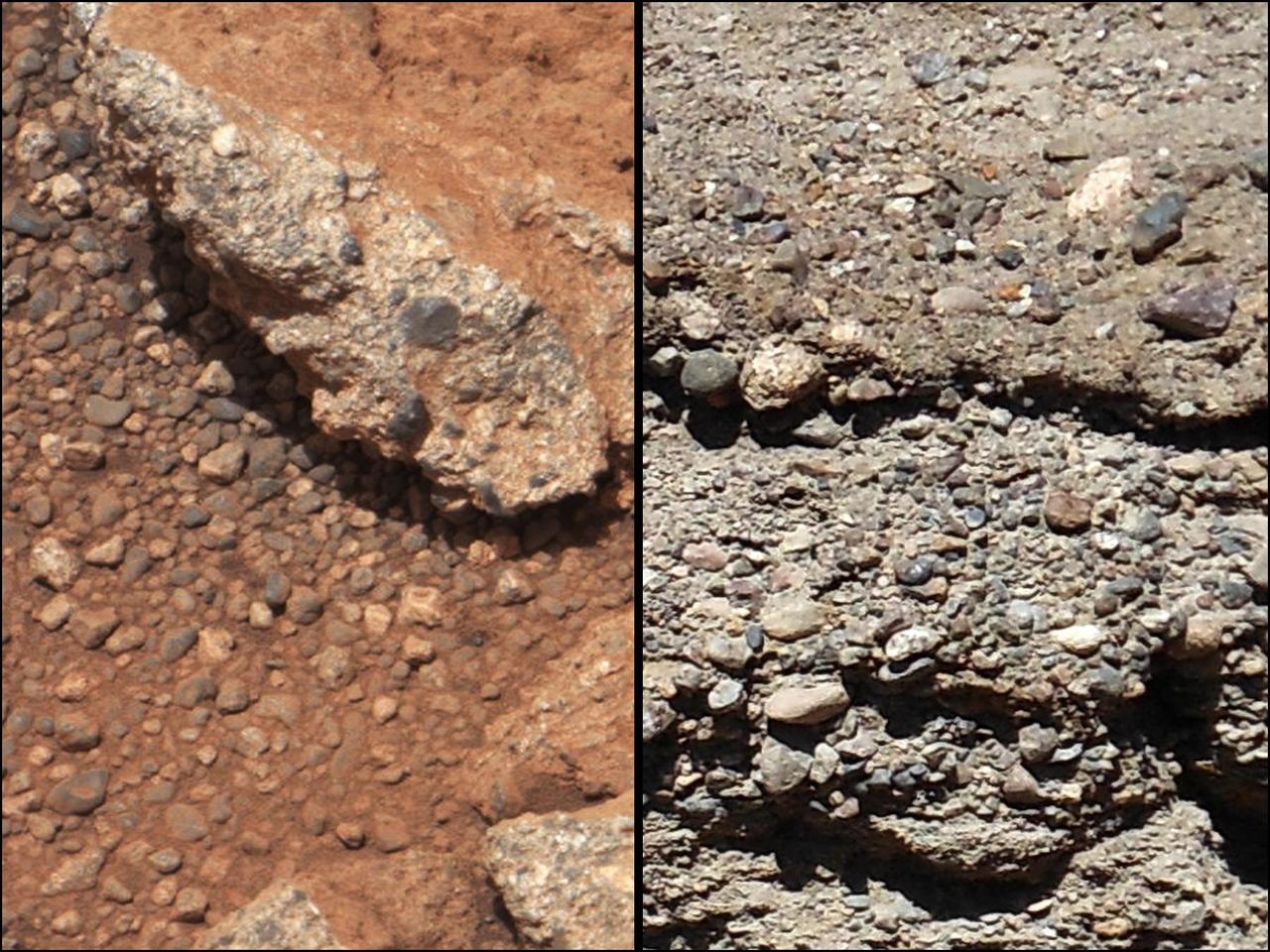
Northern vs. Southern Hemisphere: Two Martian Terrains
Mars has a stark contrast between its northern hemisphere and southern hemisphere. The northern hemisphere consists mainly of lowland plains, which appear to have been resurfaced by lava flows, erasing many older impact craters. Some theories even suggest that certain parts of the northern lowlands once hosted oceans.
In contrast, the southern hemisphere is heavily cratered and ancient, with some regions dating back more than 3.5 billion years. This is why there is a significant elevation disparity between the two hemispheres.
Martian Resources: What Could We Use & Where Should We Mine?
For sustainable human exploration and presence on the Red Planet, astronauts must find a way to utilize in situ resources (materials found at the destination) that can be repurposed. This approach reduces dependence on Earth-supplied resources, making future missions more feasible and cost-effective.
While the full spectrum of Martian mineral resources remains to be discovered and evaluated, the evidence suggests that the Red Planet could supply a range of materials critical for future efforts. Using a combination of orbital spectroscopy (e.g., CRISM and OMEGA), high-resolution imaging (HiRISE), and geophysical surveys, the diverse geological history of Mars not only helps us understand its past climate and tectonic activity but also points to locations where valuable resources could be concentrated for future exploration.
Several regions on Mars currently stand out when it comes to potential resource exploration:
Water Ice and Hydrated Minerals
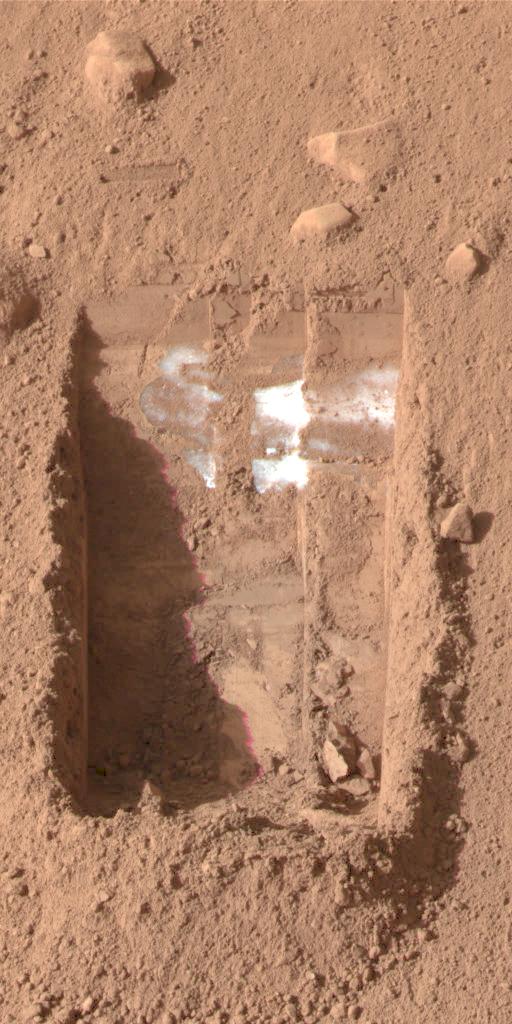
Arguably among the most valuable resources, water ice is also buried beneath the Martian soil. Remote sensing and rover missions have confirmed its presence, especially in the polar regions (such as Planum Boreum in the north and Planum Australe in the south) and beneath the surface in some mid-latitude areas, including Arcadia Planitia and Utopia Planitia. Additionally, some minerals on Mars are hydrated, meaning they contain water within their structure.
As we know, water resources are essential for sustaining a human presence and could also be electrolyzed to produce hydrogen and oxygen, which are critical for rocket fuel. Ice could also be used to shield habitats from cosmic radiation. Mining water ice in the Martian environment will require careful thermal management and energy-efficient techniques to prevent sublimation (transition from solid directly to gas).
Carbon Dioxide and Atmospheric Resources
Mars’ atmosphere is about 95% carbon dioxide (CO₂). Processes such as MOXIE (Mars Oxygen In-Situ Resource Utilization Experiment) have demonstrated that CO₂ can be converted into oxygen, which is vital for breathing and as an oxidizer for fuel. Combining CO₂-derived oxygen with locally sourced hydrogen (from water ice) could enable the production of methane or other fuels for return trips or local propulsion.
Regolith Metal Deposits
Regolith, the loose rocky material covering Mars’ surface, is another abundant resource that could be utilized. Similar to lunar regolith applications, Martian regolith could be processed to build habitats, radiation shields, and infrastructure. Techniques such as sintering (using heat to fuse particles together) or 3D printing structures from regolith-based materials are actively being explored. The diverse geological history of Mars suggests that several different types of mineral deposits could have formed on and below its surface.
Resulting from Sedimentary Processes

- Sedimentary Hematite (“Blueberry”) Deposits: The discovery of hematite-rich concretions, commonly referred to as “blueberries,” in regions like Meridiani Planum suggests the presence of iron (Fe) and oxygen (O) sources. Recent data, including from Chinese missions, have provided evidence of ancient shorelines and sedimentary deposits in Utopia Planitia, too.
- Ilmenite Sands: If present, ilmenite (FeTiO₃) deposits could provide a source of iron, titanium (Ti), and oxygen, valuable for construction and industrial processes.
- Sulfate Deposits: Indications of large evaporite deposits on Mars suggest potential sources of sulfate minerals that may hold additional industrial applications, particularly in areas like Gale Crater and Valles Marineris.
Resulting from Magmatic Processes
- Magmatic Nickel Sulfide Deposits: Similar to terrestrial deposits such as Norilsk, Mars may harbor magmatic nickel sulfide formations, which could serve as sources for nickel (Ni), cobalt (Co), copper (Cu), platinum group elements (PGE), and gold (Au). Potential locations include the Tharsis volcanic region and Syrtis Major, where ancient volcanic activity was extensive.
- Impact-Related Deposits: Large impact events may have resulted in metal enrichment, similar to Earth’s Sudbury deposits in Canada (the third-largest and one of the oldest known impact structures on our planet), potentially concentrating valuable metals in certain regions. Notable impact craters that may hold such deposits on the Red Planet include Hellas Basin, Argyre Planitia, and Isidis Basin.
Resulting from Hydrothermal Processes
- Impact-Induced Hydrothermal Cells: Large impact craters, such as Hellas and Argyre basins, have likely generated hydrothermal systems after impact, potentially leading to localized metal enrichment zones as the molten energy gradually dissipated. Gale Crater is a former lakebed with layers of sedimentary rock. The Gusev Crater, for example, explored by the Spirit rover, showed evidence of past hydrothermal activity, making it a potential candidate for such deposits.
- Volcanic Hydrothermal Systems: Hydrothermal activity associated with ancient Martian volcanism could have created massive sulfide systems similar to Volcanogenic Massive Sulfide (VMS) deposits on Earth, providing sources for various metals. The Tharsis volcanic province, which includes Olympus Mons and a network of smaller volcanoes, is one of the most geologically active areas on Mars. Similarly, the Elysium region (including features like Cerberus Fossae) shows evidence of relatively recent tectonic and volcanic activity. Here, shallow groundwater might be accessible as a result of tectonic stretching and fracturing, which may expose or concentrate ore deposits.
How Could We Mine for These Resources?
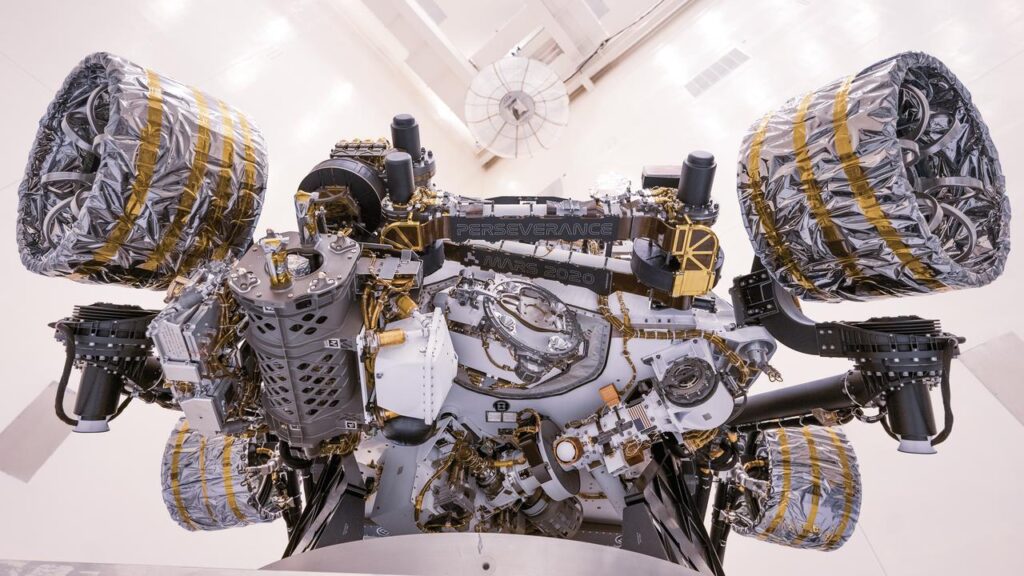
Key ISRU techniques would include small-scale, modular plants to convert raw materials into usable forms, such as extracting oxygen and utilizing regolith materials to construct shelters and infrastructure. One of the most mature ISRU technologies on Mars is the extraction of oxygen from the carbon dioxide–rich Martian atmosphere.
The MOXIE, a 1% scale prototype aboard the Perseverance rover that we mentioned, has shown that oxygen production on Mars is feasible. With further scaling, it could potentially supply breathable air, serve as an oxidizer for rocket propellant, and support longer-duration human missions. In parallel with Solid Oxide Electrolysis described above, the Reverse Water Gas Shift (RWGS) reaction is also being investigated as a complementary process, among others.
Reliable power sources for energy generation, such as solar and nuclear energy, will be needed for driving extraction and refining processes. To achieve this, adaptable technologies must also be developed to operate effectively in the planet’s harsh environment, which presents challenges such as dust accumulation, low temperatures, and reduced gravity.
The Challenges of the Red Planet
While Mars has an abundance of resources that we could potentially tap into, mining them won’t be easy. Harsh climatic conditions, including extreme temperatures, dust storms, low atmospheric pressure, and radiation exposure, pose challenges for both robotic and human mining operations and equipment. Such an environment affects everything from excavation to material transport and processing, posing engineering challenges that need to be solved.
To address these obstacles, researchers are working on potential solutions such as advanced drilling systems with effective dust mitigation, energy-efficient processing methods, and other adaptive ISRU techniques. Due to the increasing use of autonomous and remotely controlled mining equipment on Earth, many of these technologies already exist and could be adapted for Martian conditions.
International collaboration and the application of innovations from terrestrial mining will be crucial in refining these systems and achieving efficient resource extraction on Mars.
Steps Toward Tapping Into the Potential of Martian Resources
With future exploration missions planned by space agencies, the dream of colonizing the Red Planet is coming closer to reality. Advancements in robotics, artificial intelligence, and autonomous mining technology could revolutionize the way we access and utilize resources on the entire planet.
NASA’s Perseverance rover is a prime example of concrete efforts toward harnessing Martian resources. In parallel, their Jet Propulsion Laboratory is advancing autonomous drilling and excavation systems designed to cope with the Red Planet’s extreme temperatures, dust, and low gravity.
Meanwhile, SpaceX is actively developing Starship with integrated ISRU capabilities, including a methane propellant production system that uses the Sabatier reaction to convert locally sourced water and CO₂ into fuel – a critical element of Elon Musk’s vision for a self-sustaining Mars colony.
The European Space Agency (ESA) has also contributed, particularly through its conceptual studies for the ExoMars program and Mars Sample Return missions, which assess resource mapping using instruments like CRISM and OMEGA to identify mineral-rich regions such as Mawrth Vallis and Nili Fossae. These combined efforts are gradually working on overcoming Mars’s formidable environmental challenges.
Mars: A Promising Candidate for Space Mining & Exploration
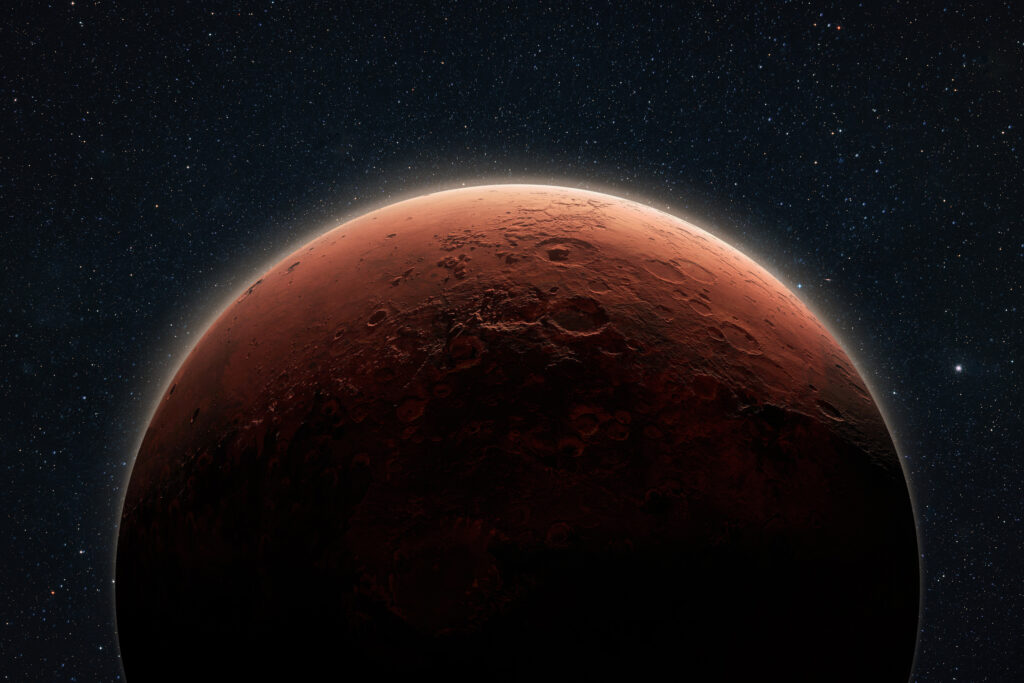
“Mars has been a goal in the history of spaceflight for a long time. It’s the closest planet that makes sense for us to explore.” These words of Carl Sagan, an American astronomer and astrobiologist, perfectly encapsulate why scientists and space agencies have long set their sights on Mars. Beyond its scientific intrigue, establishing a mining infrastructure on the Red Planet could serve as a crucial stepping stone for deeper exploration of the outer parts of the solar system and missions venturing toward the asteroid belt, Ceres, and beyond.
The surface of Mars holds the potential for resource extraction that could pave the way for sustained space exploration efforts. While challenges still remain, the promise of using Martian mineral resources, water resources, and other vital components makes the Red Planet an exciting and viable candidate for a long-lasting, fully self-sufficient civilization.